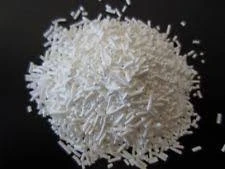
Exploring E1400 Food Additive and Its Role in Food Processing and Preservation
Understanding E1400 The Food Additive and Its Role in the Food Industry
Food additives play a vital role in the modern food industry, enhancing flavor, preserving freshness, and improving the overall quality of food products. Among these additives, E1400, also known as maltodextrin, is a widely used ingredient that has garnered attention for its versatile applications. This article will provide an overview of E1400, its properties, applications, and safety considerations.
What is E1400?
E1400 is a food additive derived from starch, typically corn, potato, or wheat. It is classified as a thickener, stabilizer, or emulsifier, making it a valuable ingredient in various food products. E1400 is produced through a process called hydrolysis, where starch is broken down into smaller polysaccharides. The resulting powdery substance is soluble in water and has a neutral flavor, making it an excellent choice for different applications.
Applications of E1400
E1400 is found in a plethora of food products, including sauces, dressings, baked goods, snacks, and dairy products. Its ability to impart viscosity and improve texture makes it an essential ingredient in the food industry. For instance, in sauces and dressings, E1400 helps in achieving the desired thickness while preventing separation. In baked goods, it acts as a moisture-retaining agent, helping to maintain freshness and extend shelf life.
e1400 food additive

Moreover, E1400 is often utilized in the formulation of low-calorie and sugar-free products. Due to its negligible calories, it serves as an ideal bulking agent, providing body and texture to food items without significantly increasing energy content. This property has made it particularly popular in products targeting health-conscious consumers.
Safety and Regulatory Status
The safety of food additives, including E1400, is a paramount concern for both consumers and regulatory authorities. E1400 is considered safe for consumption by various food safety organizations, including the European Food Safety Authority (EFSA) and the U.S. Food and Drug Administration (FDA). These organizations have conducted extensive reviews and studies to ensure that E1400, when used within prescribed limits, poses no significant health risks.
However, like any food additive, moderation is key. While E1400 is generally recognized as safe, excessive consumption may lead to digestive issues, particularly for individuals with specific sensitivities to maltodextrin or other starch derivatives.
Conclusion
E1400, as a food additive, exemplifies the advancements in food technology and the quest for improved food quality. Its multifunctionality allows for enhanced flavor, stability, and texture in a wide array of food products. As consumers become increasingly aware of food ingredients, the demand for transparent labeling and safe usage of food additives continues to rise. The food industry must balance innovation with safety, ensuring that ingredients like E1400 are used responsibly to provide standardized products that meet consumer expectations. Understanding the role and impact of food additives is crucial for making informed dietary choices, and E1400 certainly plays a noteworthy part in this complex landscape of modern food production.
-
nitrile-rubber-honoring-strict-production-standardsNewsAug.22,2025
-
aspartame-ingredients-honoring-food-safety-valuesNewsAug.22,2025
-
fertilizer-for-balanced-plant-nutritionNewsAug.22,2025
-
cyanide-gold-processing-with-high-purity-additivesNewsAug.22,2025
-
formic-acid-in-textile-dyeing-applicationsNewsAug.22,2025
-
aluminum-hydroxide-gel-in-skincare-productsNewsAug.22,2025
-
Regulatory Compliance for Global Mining Chemicals UseNewsAug.12,2025
Hebei Tenger Chemical Technology Co., Ltd. focuses on the chemical industry and is committed to the export service of chemical raw materials.
-

view more DiethanolisopropanolamineIn the ever-growing field of chemical solutions, diethanolisopropanolamine (DEIPA) stands out as a versatile and important compound. Due to its unique chemical structure and properties, DEIPA is of interest to various industries including construction, personal care, and agriculture. -

view more TriisopropanolamineTriisopropanolamine (TIPA) alkanol amine substance, is a kind of alcohol amine compound with amino and alcohol hydroxyl, and because of its molecules contains both amino and hydroxyl. -

view more Tetramethyl Thiuram DisulfideTetramethyl thiuram disulfide, also known as TMTD, is a white to light-yellow powder with a distinct sulfur-like odor. It is soluble in organic solvents such as benzene, acetone, and ethyl acetate, making it highly versatile for use in different formulations. TMTD is known for its excellent vulcanization acceleration properties, which makes it a key ingredient in the production of rubber products. Additionally, it acts as an effective fungicide and bactericide, making it valuable in agricultural applications. Its high purity and stability ensure consistent performance, making it a preferred choice for manufacturers across various industries.





